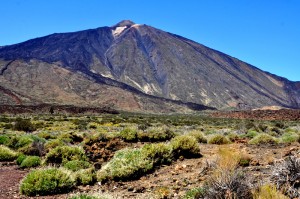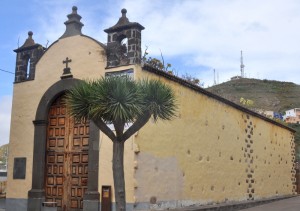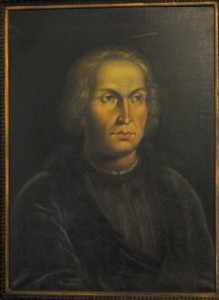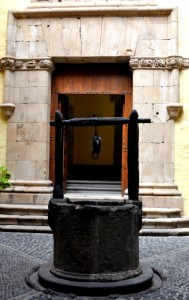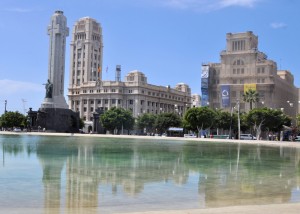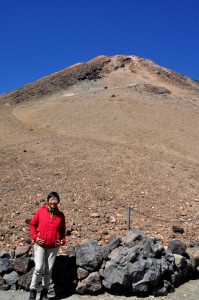May 15 – 19 : Gran Canaria & Tenerife
Canary Islands (also known as the Canaries)is an archipelago located just off the southern coast of Morocco. The Canaries with an area of 7,493km² and a population of over 2.2 million, is one of Spain’s 17 autonomous communities. There are seven main islands (Tenerife, Fuerteventura, Gran Canaria, Lanzarote, La Palma, La Gomera and El Hierro) and some islets. The capital of the Autonomous Community is shared by Santa Cruz de Tenerife and Las Palmas de Gran Canaria.
Early settlers of the islands came from North Africa some time after 500 B.C. During the time of the Spanish Empire, the Canaries was the main stopover for Spanish galleons on their way to the Americas. Today, the Canaries with rich natural and cultural tourism resources boasting three World Heritage Sites attracts over 12 million visitors a year.
My trip
It’s my first visit to the Canaries. I decided to fly from Sal, Cabo Verde to Gran Canaria, then go to Tenerife and La Gomera by boat before flying from Tenerife to Lanzarote where I would depart for Milan, Italy. The three World Heritage properties namely the Mt Teide and San Cristóbal de La Laguna on Tenerife and Gajarong National Park on La Gomera are on my ‘must-see’ list.
May 15 Friday: Sal, Cabo Verde – Gran Canaria
After a short flight, I arrived at Gran Canaria’s modern airport at 8pm. I had booked a room at Hotel Avenida de Canarias online when purchasing my plane ticket without realising that it is located in Vecindario, Santa Lucia, 15km from the airport in the opposite direction to Las Palmas. I took a taxi and paid only €19 for a fairly long journey to the hotel.
I am not fond of places that are noisy and touristic. I indeed have picked the right place by mistake: there is no tourist in this suburb! I paid only US$17 a night but the room is spacious, clean and quiet without traffic noise at all. The only disadvantage is that the place is 30km away from Las Palmas.
May 16 Saturday: Gran Canaria – Sightseeing
Gran Canaria with an area of 1,560km2 is the second most populous island with a population of 850,000. The main cities, large resorts around Maspalomas and the aeroport are all located on the east and southeastern side of the island. Public bus system is fairly good: several buses to Las Palmas pass through Vecindario with a stop at the airport. The fare for an hour-long ride to Las Palmas costs €3.85. I enjoy the ride which gives me an idea about the island. I left the hotel after 8am and reached Las Palmas around 9:30pm.
Las Palmas is a sprawling city but has an attractive old town. It is a popular cruise destination: I saw Queen Victoria, a luxurious cruise ship at the cruise terminal today. I first went to the tourist office at calle Triana to get a city map and asked about ferries to Tenerife. Then I learnt about Downtown House Las Palmas, a nice B&B almost next to the tourist office (www.houselaspalmas.com). I went in and talked with the owner who is very nice. The place with a few rooms and a dormitory is spotless clean and comfortable. I feel at home and like the modern and neat kitchen most. I therefore moved to there the following night.
It’s after 11am when I was ready for sightseeing. I walked along calle Triana and then the old town. In 1478 by Juan Rejón, conqueror of the island, built the Fort of Las Palmas which became this new city’s foundation. I am amazed to see the colossal Catedral de Santa Ana, numerous churches, monasteries, parks, squares and impressive colonial houses, a complex close to the cathedral.
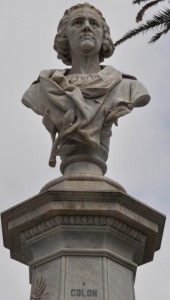 |
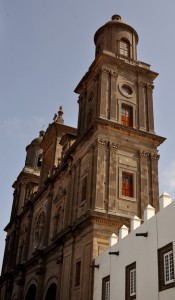 |
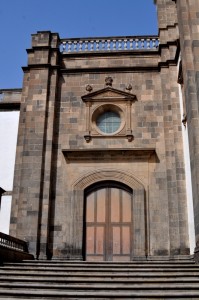 |
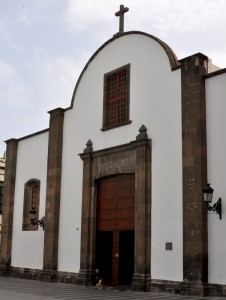 |
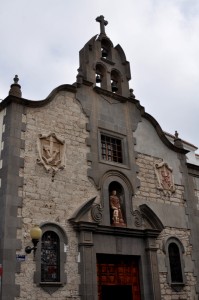 |
The first place I stopped and paid €4 to visit is Casa de Colón (Columbus’ House). Due to the Trade winds and sea streams, the Canary Islands had occupied a strategic position during the discovery of the New World. I am more impressed by the architectures than the exhibits which briefly touch on Columbus and his voyages, America before the discovery, Gran Canaria and Las Palmas and some paintings from the 16th to 20th centuries.
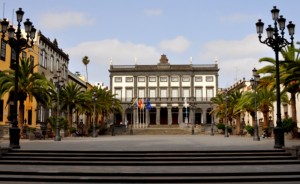 |
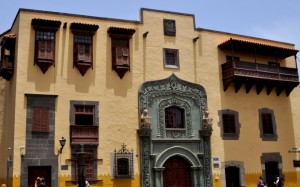 |
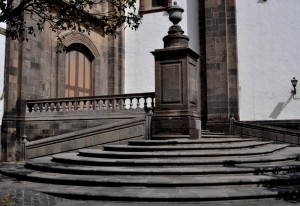 |
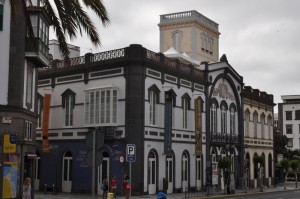 |
I strolled leisurely around and then went to the main tourist office opposite the cathedral. The lady showed me a €29 tourist pass for 24-hour hop on-off bus ride and entry to half a dozen of museums. Had the lady at the office at calle Triana mentioned this pass to me, I would have got it and visited Columbus’ House without further payment.
 But the pass once again turns out to be a bad investment. First, I only visited three museums (Museo Diocesano Arte Sacro, Museo Canario and Muser Elder) with the pass as the opening hours during the weekend are short. Second, the bus is infrequent and there is no timetable at the stop. As a result, I was at the stop around 2:15pm and did not get on a bus till almost 3pm. Had I known the timing of the next bus, I would have gone for lunch instead of wasting my time waiting. Third, I only had two bus rides with the pass. In any case, I could have more fun walking around and taking a couple of short ride on local buses.
But the pass once again turns out to be a bad investment. First, I only visited three museums (Museo Diocesano Arte Sacro, Museo Canario and Muser Elder) with the pass as the opening hours during the weekend are short. Second, the bus is infrequent and there is no timetable at the stop. As a result, I was at the stop around 2:15pm and did not get on a bus till almost 3pm. Had I known the timing of the next bus, I would have gone for lunch instead of wasting my time waiting. Third, I only had two bus rides with the pass. In any case, I could have more fun walking around and taking a couple of short ride on local buses.
I brought a ferry ticket at Fred Olsen office at Sta Catalina. Around 5pm, I decided to take a bus ride to look for the sand dunes located between Maspalomas and Playa del Inglés. I got off at Maspalomas after 6:30pm and walked for almost two hours. Part of the beach is a nude beach. As it was already after 7pm, most sun-bathers had gone. The beach was quiet and I had an enjoyable walk. I saw the dunes which are not as spectacular as appeared on postcards. I managed to find my way back to the hotel shortly after 9pm.
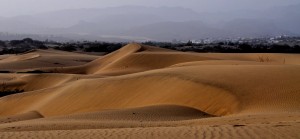 |
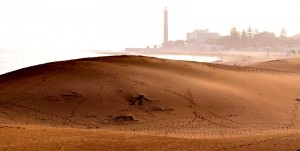 |
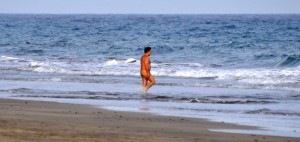 |
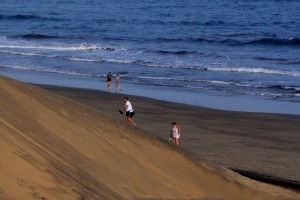 |
May 17 Sunday: Gran Canaria – Sightseeing
As soon as I got up, I took a bus to Las Palmas. After having breakfast at the Downtown House, I went to the Museo Canario (Canarian Museum) which is a pleasant surprise. The old house is beautiful, the layout and exhibits are good especially Room 6 (conservation of the corpse through a process of desiccation of the flesh and eventual wrapping of the body in a shroud made of pelt and/or rush matting), Room 7 (physical anthropology with over 1,000 crania) and Room 8 (paleopathology and funeral rites).
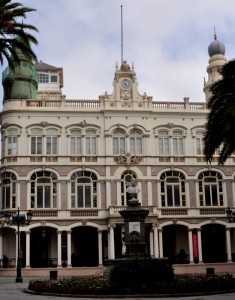 |
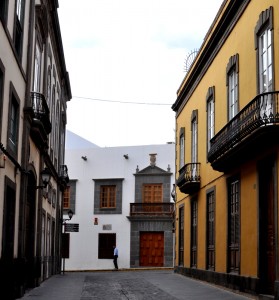 |
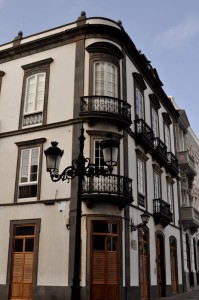 |
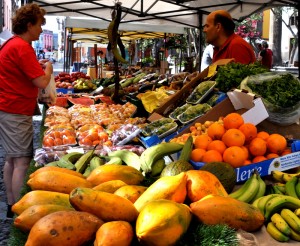 |
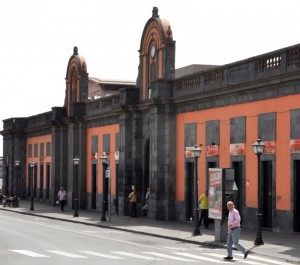 |
My original plan was to take one more bus ride with the pass before its expiry. But I gave up the idea as I had no idea how long I had to wait. Instead, I tried to make my way to Tejeda which affords fantastic views of the mountains including the Roque Nuble and Roque Bentayga.
The best way to discover the island is to rent a car and stop wherever one wants. As I do not drive, I have to rely on public transportation. I first took a bus to San Mateo where one can get a connecting bus to Tejeda at 12:30pm. Unfortunately, there is only a bus to Tejeda at 10am and 4pm. I was stuck. What should I do? I did not give up: I took a taxi (€19) which dropped me off at the park information centre. I got some information including a sketch map of a short hike to Tejeda. The young lady said “it is an easy walk of less than two hours and the trail is well-marked’. A couple with their own car was seeking similar information.
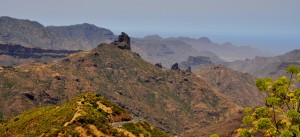 |
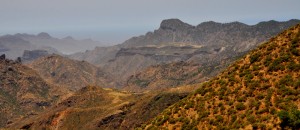 |
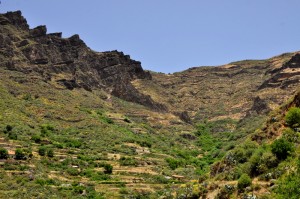 |
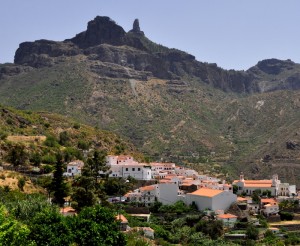 |
Anyway, I had a scary time: it was a hot day and there was no hiker in sight. The path is sandy, steep and slippery. I fell a couple of times. All signs have reference to Tejeda in Spanish. As a result, I had taken the wrong trail: I walked past a few hamlets and had to ask the locals for direction. Finally I arrived at Tejeda’s main square and ran into the couple I met at the information centre two hours ago. What a small world! On learning about my disaster, Fabien kindly offered to give me a lift.
They dropped me off at an interchange where I spotted a bus heading to Teror a place of pilgrimage for all residents of the island as the municipality holds in its basilica the statute of the Virgin del Pino, Patron of the Diocese of the Canary Islands. The tourism office in Las Palmas had suggested this place to me too.
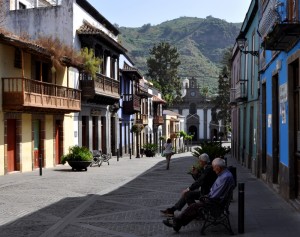 |
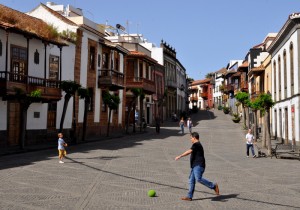 |
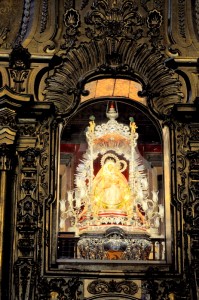 |
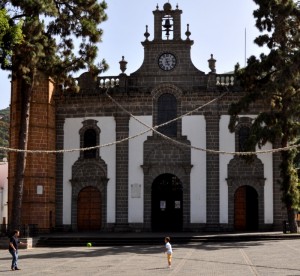 |
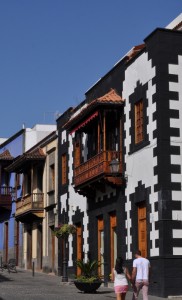 |
Hence I took a bus to Teror which turned out to be a nice surprise. The basilica is impressive and tranquil. There are also many beautiful balconies and colonial buildings. I had a beer and tapas before rushing back to the bus station for the 6pm bus. Once again, I had got things wrong: there is no bus at 6pm on Sunday. I therefore had to wait for 35 minutes at the station. I would rather spend my time meeting the locals in the pub.
Lesson to be learnt: buses run at a different timetable on weekends. I must check carefully in order not to waste time or pay a lot for taxi. Despite my frustration, I count myself as lucky. I have met Fabien and her husband who gave me a lift. I also had a surprise visit to Teror. C’est la vie!
May 18 Monday: Gran Canaria – Tenerife (by boat)
There are two ferry operators from Gran Canaria to Tenerife (a fast ferry by Fred Olsen and a normal ferry by Armas). I purchased a single ticket (€42) for the 9am ferry from Fred Olsen which provides a free shuttle to the port at Agata at 8am. I left Downtown House at 7:15am and took a taxi to the meeting point at Sta Catalina.
At 10am, I arrived at Santa Cruz de Tenerife, the capital of the island. Tenerifeis the site of the worst air disaster in the history of aviation, in which 583 people were killed in a collision of two Boeing 747s in March 1977. Though Tenerife is the largest island of the Canarias with an area of 2,034km² and a population of over 900,000, Santa Cruz, the capital citylooks smaller and more relaxed than Las Palmas.
My plan was to stay at San Cristóbal de La Laguna (La Laguna) so that I could soak in the atmosphere of this old colonial city. I would also visit Mt Teide (3,718m), the highest peak of Spain before taking a boat to La Gomera. I went straight to the tourism office to pick up maps and information on the island and how to get to the Teide. The friendly lady at the tourist office also suggested a visit to Orotava, the ‘City of Balcony’ which may become a World Heritage Site in future.
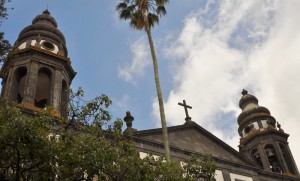 |
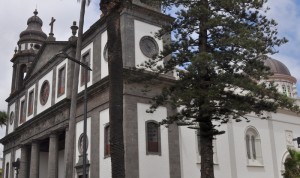 |
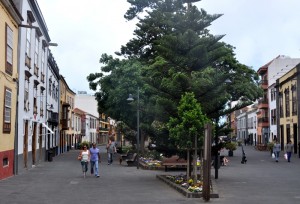 |
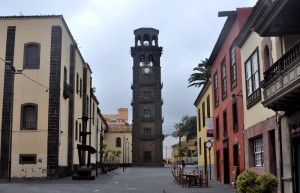 |
I booked a B&B called Ratones de biblioteca on calle Juan de Vera in La Laguna. I brought a stored-value card for €5 before boarding the tram. The ride is €1 with the card instead of €1.20. The line has over 20 stops and I finally arrived in La Laguna which is 550m above sea level on a plateau. The first thing I notice was the drop in temperature: I quickly put on a windbreaker.
The B&B is located at the other end of the old town. Hence, I had to walk through the preserved town with my heavy suitcase. It is run by a young couple who keeps the ground floor while providing several simple and clean rooms for lodgers and tourists on the first floor. The house is filled with books and my room is decorated with books. The sitting cum dining room is bright and cozy with high ceiling. I feel at home.
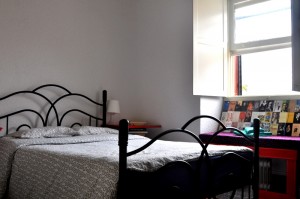 |
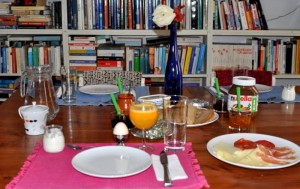 |
I was hungry and went to a local eatery next door. The food is average. I had not asked for the price as the lunch menu is normally less than €10. I was therefore shocked when I was asked to pay €15 for a chicken soup, calamari with rice and a glass of red wine. Another lesson to be learnt: always ask about the price!
After lunch, I spent the afternoon strolling aimlessly in this living historic town. First founded in late 15th century, it had two original town centres each belonging to a different time of history. Based on information available in the UNESCO World Heritage Sites website, I understand the Upper Town was the initial founding site next to an insalubrious lagoon (which has now totally disappeared) with an unplanned urban structure. The Lower Town, one kilometre to the East, was designed on a grid according to philosophical principles and Royal regulations, organized around a founding square known as Plaza del Adelantado.
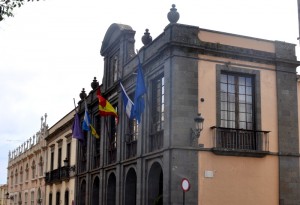 |
|
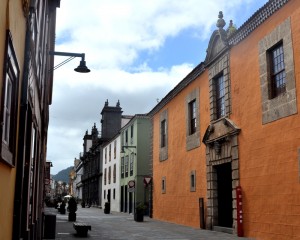 |
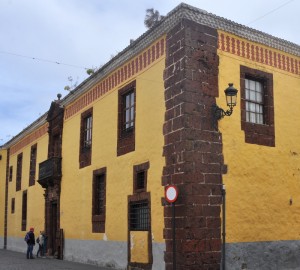 |
The main justification for the listing is that it “exhibits a very well preserved, extraordinarily homogeneous town structure, in which the religious, institutional, and residential buildings coexist on the original map design in perfect harmony. A great number of architectural instances representative of its traditional town structure stand out, and its furniture heritage shows the kind of relations it has maintained throughout its history. Furthermore, the original layout still exhibits a relationship between the colonial town layout that is typical of the concept of a territory-town and the Mudéjar, Neoclassical, Modernist, Rationalist and Contemporary architecture in over 600 preserved public and private buildings. first example of an unfortified town with a grid model that was the direct precursor of the settlements in the Americas under Spanish rule during colonial times. It is a living example of the exchange of influences between the European culture and the American culture, with which it has been maintaining constant links.
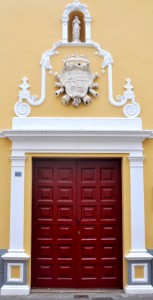 |
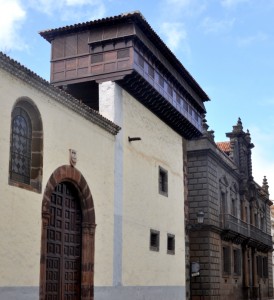 |
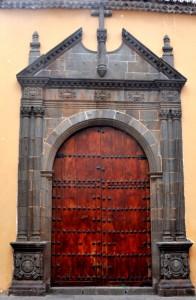 |
It was the first example of an unfortified town with a grid model that was the direct precursor of the settlements in the Americas under Spanish rule during colonial timesToday visitors can still enjoy the wide streets and open spaces with many fine churches and public and private buildings dating from the 16th to the 18th century. There are good illustrations of each building.
I visited the museum in a restored house. There are exhibits on every aspect of the history and development of this old town. It was so cold that I had to put on my down jacket. Some 20 eateries in the old town are putting their acts together: one can have a drink and tapas for €3. One can have a free meal after collecting 12 stamps. I used the pass and tried two pubs. The wine is good and the tapas I had were delicious! With good Wi-Fi in the house, I spent the evening uploading photos on my website.
May 19 Tuesday: Tenerife –La Gomera (by boat)
My plan for today was to visit the Teide National Park before taking the last ferry to La Goma around 7pm from Los Cristianos. Transportation is a problem without a car. I had to take Bus 346 which departs from Puerto de la Cruz at 9:15am. Hence, I left the house shortly after 7am, walked to the bus station (about 20 minutes) and boarded the first bus. By the time I got on Bus 346, I was already exhausted! Indeed, I dozed off on the way to the park despite the scenic route. The bus costs over €6.
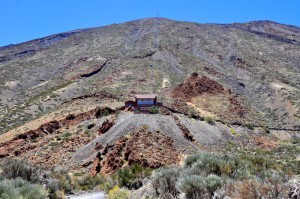 |
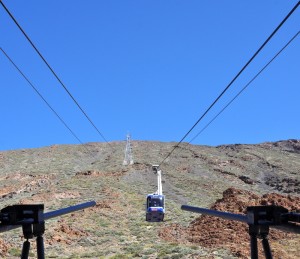 |
There are lots of things to do in the park which has an area of 18,990 hectares: one can hike for hours or days or take a cable car tide to 3,550m. I am greedy and always try to do as much as possible. I brought a return ticket for €27 and spent almost two hours taking two short hikes from the cable car terminal. The trail on the right takes one to see the old craters while the one on the left was cut through lava giving one a surreal feel. The views of both trails are simply stunning. I must say the views from Mt Teide of the landscape created by volcanic activities are incredible. I was lucky: the weather was excellent with clear sky and I could even see La Gomera and La Palma.
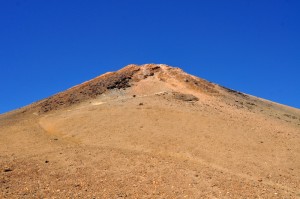 |
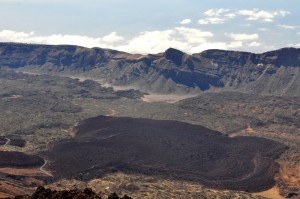 |
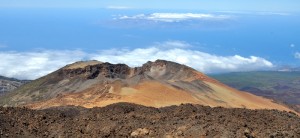 |
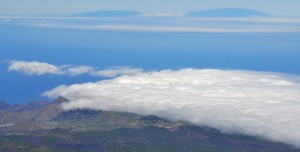 |
I met two young German students from Hamburg in the cable car. They are polite and nice and I enjoy their company. We were back to the cable car station around 1:30pm. Then we walked to the bus terminal at the park headquarter/Parador. I wish I had time to take the Roques de Garcia circular walk from the Parador passing famous landmarks like “El Dedo de Dios” (God’s finger) and “Catedral” and discovering lava caves along the way.
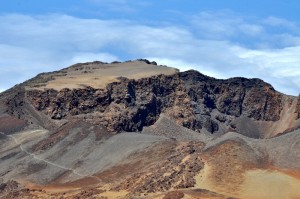 |
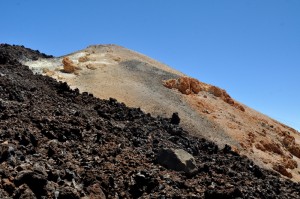 |
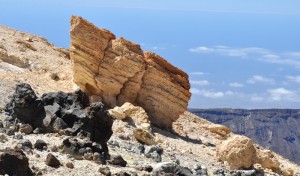 |
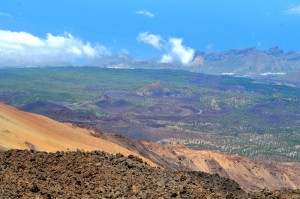 |
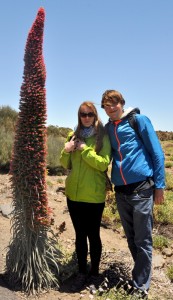 |
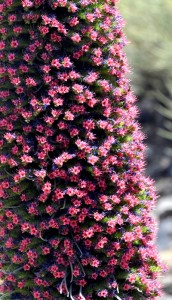 |
At 4pm, I took a bus to Los Cristianos. I told the driver I would get off at Los Cristianos to catch the ferry to La Gomera. But I missed the stop as he had not told me. I had to pay get another bus ticket to return to Los Cristianos which is a touristic seaside resort. I eventually found my way to the pier. Instead of taking the fast ferry run by Fred Olsen, I took a Armas ferry for €55 return. I realise I prefer the old-style ferry where I can stay on the deck enjoying the views and fresh air.
The boat arrived before 8pm at the port of San Sebastian, the tiny capital of La Gomera. After walking through calle Real and calle Patron, I found a single room at Pension Colón for €20. The room has two beds, a wash basin and a desk. It somehow has a monastic / dormitory feel especially my room is facing the inside courtyard. I had sardines with two glasses of wine at Pension Victor for less than €10. It is a family run business and the owner cum chef and his wife are very pleasant.


